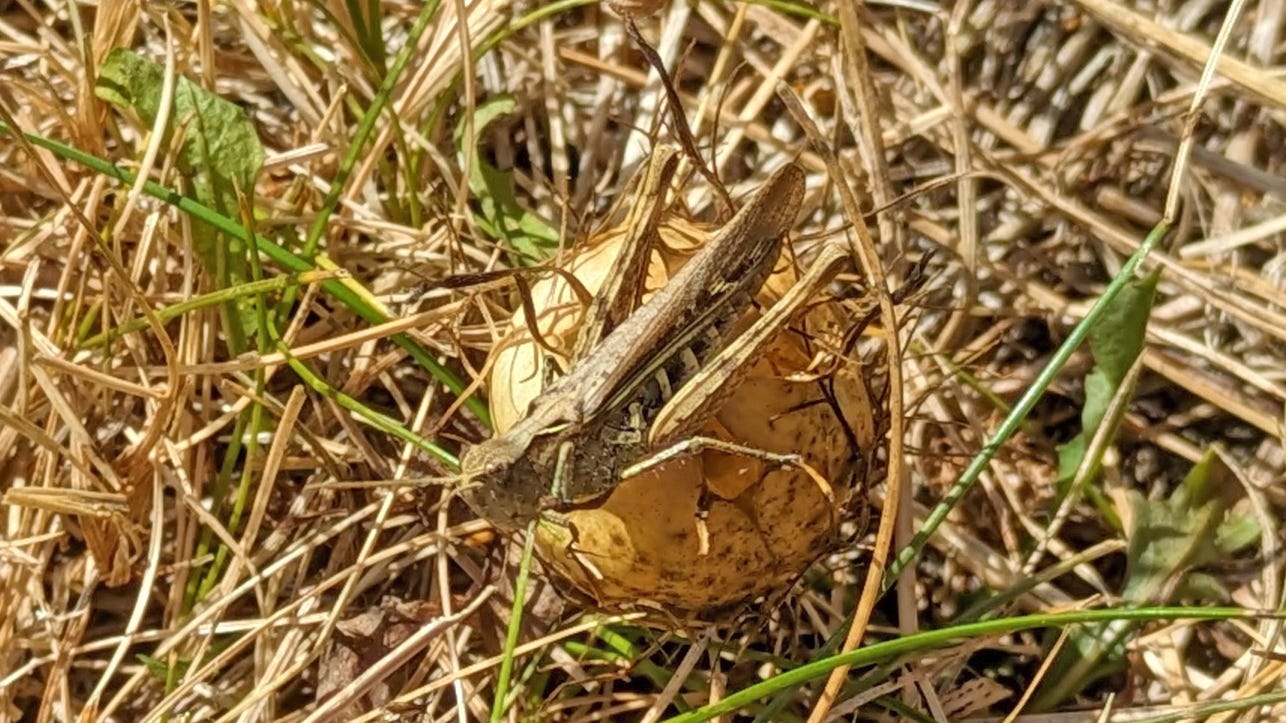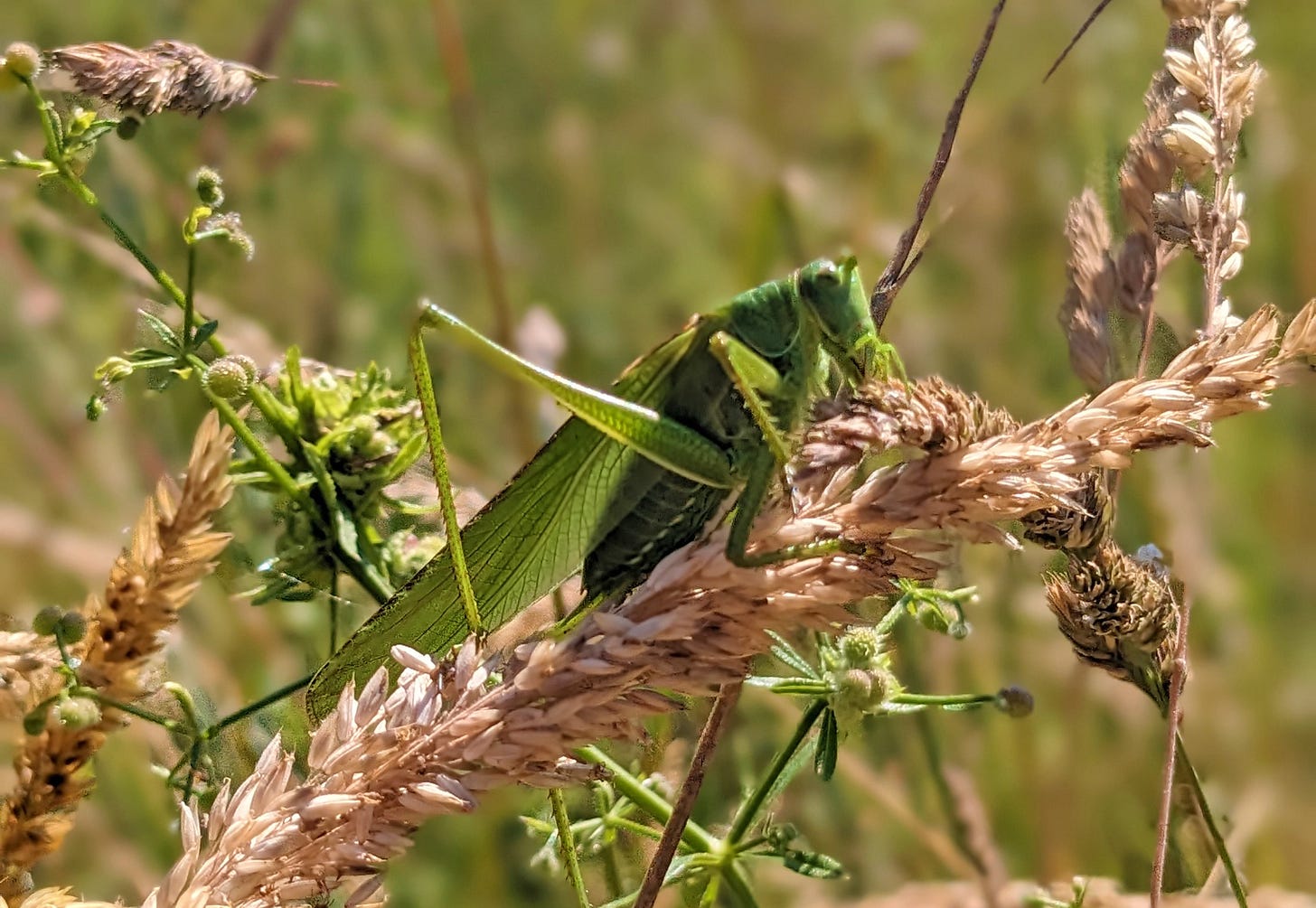What's the difference between a cricket and a grasshopper?
And what are you wondering about while you wander?
Our friends’ dog has been staying with us this week. His name is Murray Walker, after the much-loved Formula One commentator, so it probably shouldn’t surprise me that his favourite activity is watching some of the speediest inhabitants of our garden: the grasshoppers and the crickets.
I realised while chuckling at Murray pounce at these Orthopteroids, which I see in our garden all the time, that I had no idea if they were grasshoppers or crickets… or what the difference between the two is. Until today, I didn’t even know that Orthopteroid was a word. Either way, it’s been very entertaining to watch Murray pouncing at them, mostly because he doesn’t have a chance in hell of catching one.

It turns out that the easiest way to tell apart crickets and grasshoppers is by the length of their antennae. Crickets have very long antennae (as long as their body or longer), while grasshoppers have much smaller antennae. Crickets are also nocturnal, so if it’s the daytime, you’re probably seeing a grasshopper, and if it’s dusk or later it’s likely a cricket. We have both in our garden, thanks to the fact we’ve let most of our lawn grow wild and have lots of wildflowers and grasses growing.
My next task is to fill a spread in my nature journal about grasshoppers, crickets and the difference between the two. That way I’m less likely to forget what I’ve learned, and I will no longer offend my grasshopper friends by nicknaming them ‘Jiminy”.
In the meantime, my technique to remember the antennae fact is that cricket is a LONG game, and therefore crickets have long antennae.

In The Clearing this week,
invites us to ‘rediscover awe’ through ten simple prompts, like making contact with the outside world…“Notice what attracts your attention. Let yourself be drawn towards those things.”
and fostering curiosity:
“So many of us switch off our curiosity as we grow up - we feel that we have to already know everything. Head off in the opposite direction. Notice what you don’t know. Discover what piques your interest. Ask too many questions, all the time. Follow your own leads.”
Obviously this was right up my street and it’s exactly what I want you to tap into today.
Ask yourself… “What don’t I know?” or “What’s my grasshopper/cricket conundrum?”
Follow your curiosity and see where it takes you.
Sources & Further Reading
A 34-second video from the UK Centre for Ecology & Hydrology on the difference between grasshoppers and crickets featuring a very large model cricket I would very much like to own
Wildlife Trusts guide to UK grasshoppers and crickets
The British Naturalist Association’s ID Guide to grasshoppers, crickets and groundhoppers
Countryfile’s guide to common UK grasshoppers and crickets
Jiminy Cricket, who has frustratingly SHORT antennae, explains how to have fun safely.
Here’s a bonus one and a half minute voice note about a kingfisher sighting!






“In the meantime, my technique to remember the antennae fact is that cricket is a LONG game, and therefore crickets have long antennae.” As a fan of both types of cricket, I love this 😆
Crickets are good luck. They like a bit of potato or citrus slice to rehydrate and oatmeal for a bite to eat. They do chirp and like an egg carton to hide. Just know they are noisy at night. Deep fried crickets and grasshopper are good to eat. When too large grasshoppers I think molt and become locusts and fly in swarms. A plague well known when conditions are right.